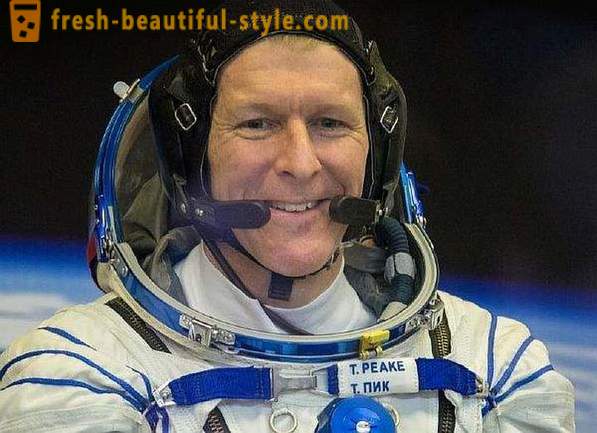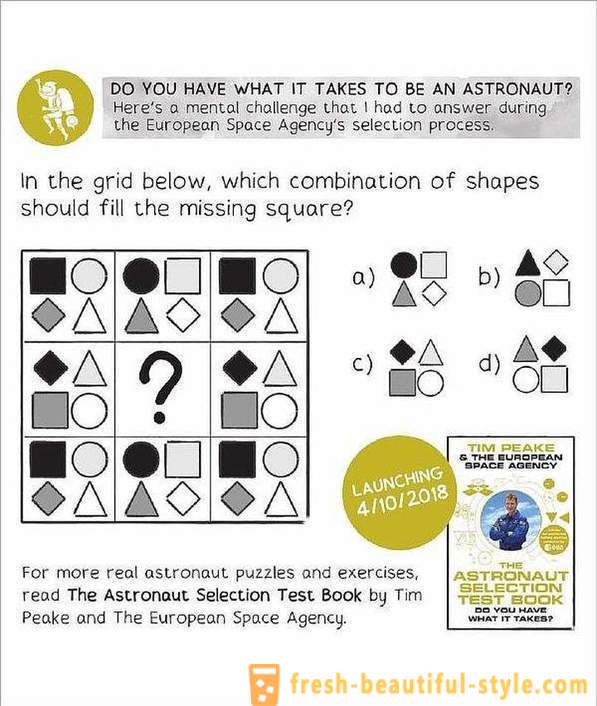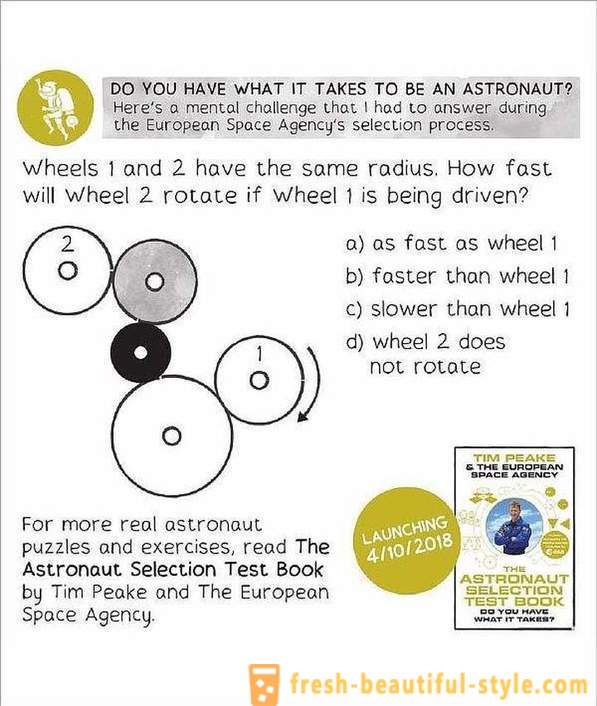Puzzles for astronauts from the European Space Agency
• Puzzles for astronauts from the European Space Agency

This is a puzzle for the astronauts developed by experts of the European Space Agency.
Who among us has not dreamed as a child to fly into space? However, in order to realize his dream, one desire is not enough. This is well aware of Tim Rush, who had to overcome many difficulties to become an astronaut. For example, by passing the qualifying test in the European Space Agency, he had to solve logic problems, which shared in his book "Screening tests astronauts: do you have what it takes?"
Three puzzle games of the upcoming release of the book he published in his twitter. You will be able to solve them?
Logic
1. In the figure below, which combination of shapes suitable for filling an empty cell?

2. Gears 1 and 2 have the same radius. How will quickly rotate cog 2, if the first will come in motion?
a) at the same rate as the first
b) faster than the first
c) slower than the first
d) generally will not rotate

3. The line runs inside the three-dimensional shape so that it is equidistant from all surfaces. What is this figure? a) the scope
b) an infinite cylinder
c) cube
g) octahedron

Before you rejoice, think that a ability to solve the puzzle for the profession astronaut enough. To get a job in the European Space Agency, you have to first go to the European Astronaut Center in Cologne, where you teach science, mathematics, engineering, and medical skills, as well as orbital mechanics, the ability to survive and Russian language (for those who do not owns).
Subsequently, two and a half years of training in extreme conditions around the world, and only then, you may be able to fly into space.
But back to the puzzles.
Answers
1. Option B - the missing pieces are a reflection of the surrounding figures, but in a different color.
2. Variant A - gears same radius at the beginning and end of the chain rotating at the same speed.
3. Option B - in fact, it is a question of the locus of a straight line.
Well, on the right?













































